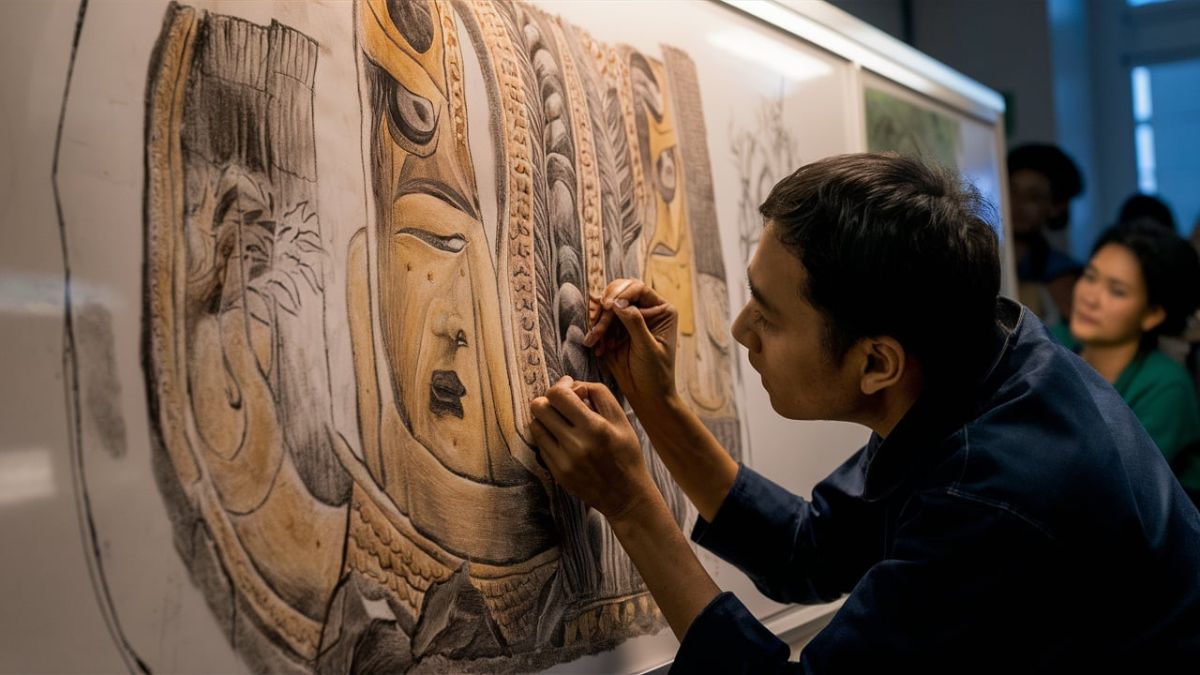The story that Ancient Artz tells concerns the qualities, ideas, aspirations, and worries of mankind in the past. This is shown in Paleolithic works of Artz in which humans are depicted as painting on wall cavities. The ancient Romans used tiles in composing excellent pictures on the walls of their buildings.
The Dawn of Artistic Expression
Primitive Artz is Paleolithic in age, that is, millions of years old. Of special interest are those of Lascaux and Altamira which present animals, a hunt and a hand. It is necessary to note that these sections contain historical and ethnographic material that may provide information about the life and the vision of the world among prehistoric civilizations.
Ancient Civilizations and Their Artistic Legacy
With the advent of the ancient civilizations, arts began to take a boom in many different styles. In Mesopotamia, the Sumerians and their successors, the Babylonians, produced very stylized sculptures and reliefs, and many of these depicted gods and goddesses or scenes from mythology. The Egyptians, famous for their pyramids and temples, originated hieroglyphic writing, painted tombs, and sculpted pharaohs and gods.
In the case of the Indus Valley Civilization the civilization known as the Harappans, the people who had assumed an almost urban life while creating pottery, seals and bronze sculptures. The Chinese civilization over the age has produced calligraphy in painting and sculptures.
Greek and Roman Artz: A Classical Legacy
Archaeological discovery shows that the art of antiquity is predominantly of discredited Ancient Greeks. As to the molders of images, Phidias and Praxiteles painted profiles of gods, heroes, and athletes as nearly life-like as it is possible to imagine. A few more are Greek vases painted black figure and red figure or red figure and black ground respectively.
The Romans, who borrowed from the Greeks, went on to crate an identity of their own. In it monumentalism is expressed in the Roman architectures like the Colosseum and the Pantheon. Roman mosaic artz that involves the use of more enhanced and beautiful patterns and use of colors was common.
The Artz of the East
As for the East, it despite being initiated not as late as Europe, still had its own early roots with the artistic traditions of India, China and Japan. The artwork of Indian Artz varies and tends to be religious and features Hindu and Buddhist gods. Chinese Artz under their Confucian and Taoism streams of thoughts reflect calls for harmony with nature and for spirituality. Japanese Artz that is divided into more classifications are calligraphy, painting and ceramics in which they exhibit simplicity and elegance.
The Legacy of Ancient Artz
The effects that Ancient Artz has on the present society are still immense. Ancient Artz functions as artisitic reference for present artists as well as rich reference for recipients regarding activities of ancestors. Studying Artz from the ancient period helps to reveal the tendency of human nature and the kindle the world in art.
FAQ’s
1. First of all, what constitutes ancient Artz?
Thus, the first typical examples of Artz can be the paintings of the caves of Lascauch and Altamira. These pictographs of animals, hunts, hands, etc., are paleolithic in character.
2. Which artistic styles and methods dominated creation in ancient civilizations?
Ancient civilizations produced new styles and methods of art, including sculpture, painting, pottery, architecture, and mosaic art. Examples include Egyptian hieroglyphics, Greek black-figure and red-figure pottery, Roman floor mosaics, and Chinese calligraphy.
3. How do the art of the ancients contain the values and the beliefs of their producers?
Ancient Artz is a portrayal of the culture of its makers. Egyptian Artz was related to religion and might of pharaohs and Greek Artz was involved the depiction of structure and beauty of body.
4. How is the art of the ancient Artz relevant in the modern world?
Thus, Ancient Artz has an influence on today’s world that is impossible to deny. The website enables modern artists to draw from at Ancient Artz to depict past histories and cultures. Thus, based on the material found in the Artz, people’s lives and the purpose of art can be comprehended.
5. Do you know any ancient art piece or culture you find interesting?
These are questions to which an interlocutor can respond in any way they see fit and where an interpretation that goes into more detail of certain aspects is possible as soon as one gets a better look at specific forms of ancient Artz. You could talk about an era of history or art piece that you are curious about and why.
Conclusion
Ancient Artz is a trans-cultural and trans-aged business. Culture cannot be regarded as a home of unchangeable values; it is the paintings on the cave and the mosaik of people. Hence we learn the cultures of the original Artz as subordinate but integral cultures in the large human culture and civilization map.
